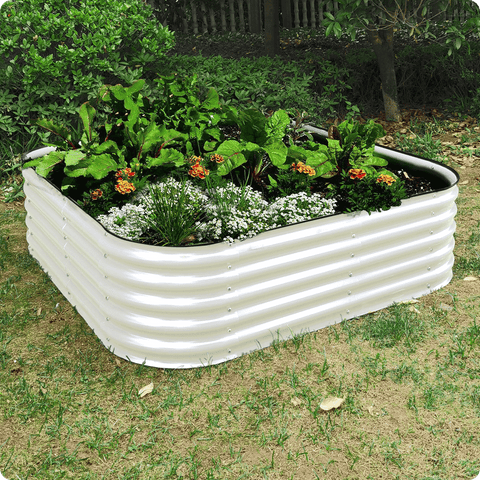Plant Vegetables Narrow Space Garden Beds
Is your garden bed twin or king size? Or maybe you have no land at all, just a small balcony or terrace. No problem. As long as you can find a sunny place, whether on the ground or in mid air, you can satisfy your appetite for fresh agricultural products.
Almost everyone can get more space than they realize. It only takes a little creative thinking to see it Roofs, alleys, front porches, and even fire passages are all feasible places to grow vegetables. The key to success is to plan carefully and make full use of what you have.

Maximize your space
Growing vegetables in containers
If it is impossible to plant underground due to space constraints, poor soil or lack of sunlight, containers are a good choice. When growing food in flower pots, choose courtyard or dwarf varieties and shallow root plants, such as lettuce, radish, garlic and leek. Bellamy said that for containers, you can use almost anything that can hold soil - from fabric planting bags to old metal washing buckets - as long as you provide a good drainage system. Remember that container plants need more water than underground plants, and it is best not to let them dry completely. In addition, be sure to use organic fertilizer during the growing season
Planting vegetables on raised garden beds
Raised garden beds are also a good choice - if you have a level foundation to build them. Compared with the underground bed, they have the advantages of easier access, better drainage and faster soil warming in spring. "It's great to dig and cultivate beds in the field, but it may take several years to build really good soil. An elevated bed filled with good soil and compost mixture will give beginners a good start. Even a bed as small as 4x4 feet can hold many vegetables and is easy to manage
Vertical planting of vegetables
If you want to plant vine vegetables, such as beans, cucumbers and pumpkins, give them something to catch with their tendrils, such as a grid, fence or net. Gardening can not only save space, but also create structure and visual interest. "I like to plant cucumbers on garden fences or grids to save space; each plant only needs to leave about a foot of space in the garden," Middleton said.
The lattice has countless shapes, patterns and materials. But you can easily make your own bamboo poles with simple bamboo poles fixed on the top to form a conical tent shape.

How to choose the best vegetables for a small garden
improve work efficiency
When you have only limited garden space available, please select plants that can bring you high yield in a small area. Many vegetables and herbs have compact varieties, which are suitable for containers and small gardens.
Prioritize
In a small garden, you have little space to experiment or grow waste crops. Set priorities by planting what you like, what is unique, and what will thrive. We also need to plant fresh and delicious food. "Lettuce meets all the qualifications of my perfect crop," Bellamy said. "I use a lot, and it's best to eat it directly from the garden. It also grows quickly, is attractive, saves space, and is easy to grow.
If you harvest them continuously, many types of garden vegetables will provide you with food throughout the growing season. These "cut and cut" vegetables continue to be given by sprouting new leaves when the outer leaves are cut off. Examples include live leaf lettuce, beets, collards, collards, Meckleen, and esculenta. "Lettuce varieties like 'salad bowl' and 'red salad bowl' are very suitable for containers or any small space. Instead of raising the head of lettuce, it is better to pick the outer leaves continuously," Middleton said.
Plan to increase production
By continuously planting a series of crops in the garden bed or container, you can maintain the productivity of your small garden throughout the growing season, starting from the cool season in spring, the early maturing crops, and then the vegetables in the middle and late summer, which will last until autumn. "The idea of inheriting planting is not to leave precious garden space idle, and be ready to plant new things when the space is open," Bellamy said. The same technology can also be used to extend the growing season of a crop, especially fast maturing foods, such as radish and beans. By planting them every two to three weeks, they will mature at different times.

Choose a good partner
Intercropping is similar to continuous planting in concept, but the difference is that you can maximize the yield by matching different crops that are good partners and grow at different speeds. For example, you can plant sugar peas in early spring and polar beans in them. When the peas are finished, the beans will be ready to take their place.
